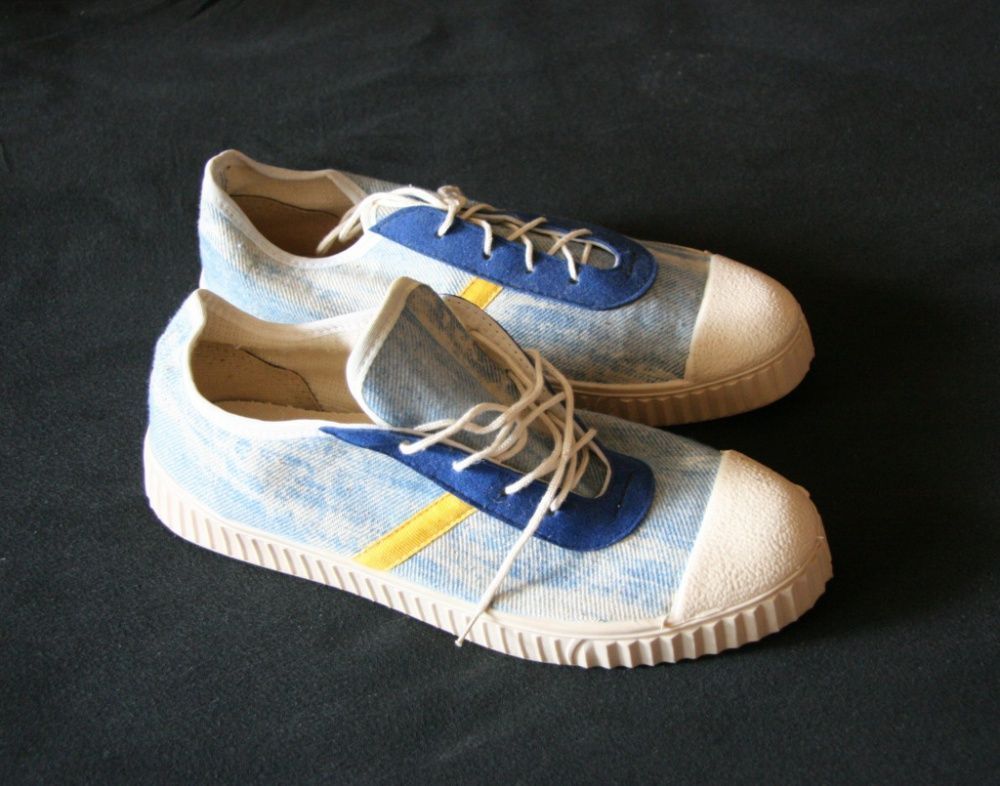
The return of Soviet sneakers

Recently, the theme of the Soviet Union in culture and fashion has become increasingly popular: adults are slowly nostalgic, and young people are actively interested. In the wake of interest in Soviet aesthetics, the young Moscow businessman Yevgeny Raikov came up with the idea of reviving Soviet sneakers, the very ones in which the mods of 60-70 went. But is it interesting to someone today, in the 21st century, the design of fifty years ago? We asked Eugene to tell how he is trying to return sneakers of the Soviet era to modern fashion and what comes of it.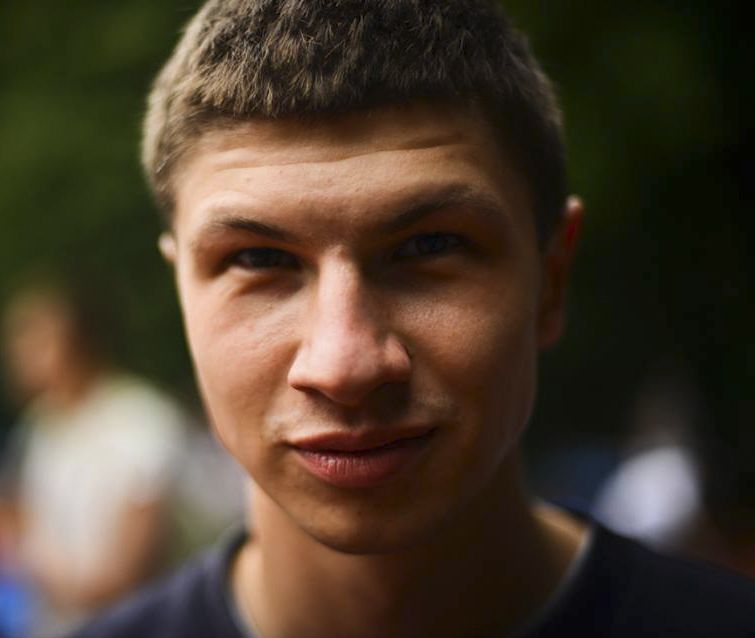
Evgeny Raikov is a marketer with experience in IT and clothing production. Over the past 5 years, as an employee, he introduced new products to the market, developed brands and services. Since the end of 2012, he has been the owner and manager of the Soviet Sneakers company (trademarks Two Balls and Soviet Sneakers), which is engaged in the production and sale of classic models and brands of sneakers from the USSR. Eugene is in an active search for investors interested in selling high-quality sports shoes designed by the Soviet model. He will be happy to meet representatives of the shoe market who are not indifferent to this project, and to devote them to the details of his business plan.
Eugene email address: evgenyraykov@gmail.com,
Facebook project page: facebook.com/sovietsneakers
Project website: www.twoballs.su
At the root of the rubber fashion
The progenitors of sneakers as a type of shoe appeared in the 30 of the XIX century thanks to the invention of rubber vulcanization technology. In 1892, nine small American rubber factories merged under the name US Rubber Company, and in 1916 launched the Keds brand, which sold rubber shoes with canvas tops. It was then that the sneakers got their usual name and look. The real boom in sneakers began a year later, in 1917, when the American Marcus Converse released the first sneakers for professional basketball players Converse All Star. Soon the legendary basketball player Chuck Taylor became the face of the brand, and he also proposed adding round protective rubber patches on the ankles. The improved model was named Chuck Taylor. In the 1950's, half of the US National Basketball Association players played in Chuck Taylor All Star sneakers. Since then, sneakers of various brands have been in phenomenal demand around the world, and their popularity has not ceased to grow.
In the 1950's, the popularity of sneakers was so great that they leaked even through the iron curtain into the Soviet Union. In 1957, the VI World Festival of Youth and Students was held in Moscow, which brought together young people from all ideologically free countries of the world. Of course, they arrived in sneakers, and Soviet youth immediately fell in love with these shoes, forgetting about Czechs and sandals. It was impossible to fight this passion, it could only be headed: the Soviet government installed GOST 9155 gym shoes on rubber and rubber-textile sports shoes and began to produce them in huge quantities. Sneakers were sold in any Sporttovary store and were worn not only by all schoolchildren and students, but also by the heroes replicated in popular culture - Electronics, Petrov and Vasechkin, Wolf from the animated film “Wait a minute!” And even the dog Sharik from “Three from Prostokvashino” ". Classic Soviet sneakers had a light or red sole with clear seams, and the upper is made of textile, usually blue or black. The laces were most often white; some models had round ankle patches. In general, these sneakers were very similar to their ancestor - Converse All Star.
A special luxury among Soviet consumers was considered “Two Balls” sneakers made in China, friendly to the Soviet Union. They cost about 4 rubles, and it was very difficult to get them. Two Balls sneakers differed in high quality and fashionable design: at least 5 models of different colors were on sale. The sole was green and thicker than that of the Soviet sneakers, the trimmings, the toe and the laces were white, and on the inside of the ankle area there was a rubber patch that depicted the 2 of the ball - football and basketball.
In the 60-70's there were no shoes in the Union, equal in popularity to sneakers. But in 1980, the German company Adidas provided Soviet athletes with a uniform for performing at the Moscow Olympics, and after that, Adidas sneakers became the new object of desire for youth. Soviet sneakers faded into the background, and then they were completely forgotten and completely supplanted by foreign competitors.
The second life of Soviet sneakers
In 2012, a young businessman, Yevgeny Raikov, founded the Soviet Sneakers company with the goal of reviving the classic Soviet-era sneakers — GOST sneakers and Two Balls. Evgeny has a considerable experience in marketing and production. Prior to Sovetsky Ked, he graduated from the Higher School of Economics, worked as a marketer in a large financial company, and participated in the launch of the John John Orchestra brand and clothing store. Explosion Moscow designer Igor Isaev, worked on the production and conceptual component of jeans for the Russian brand Denis Simachev. The motivation for creating your project was the realization of an empty niche: “The market lacks a product that is simple in production and perceives, is price-effective, yet has a cult status and already has its own audience,” Evgeny is sure. Soviet sneakers were the very product: Eugene wore GOST sneakers in childhood and was forever impressed by this shoe. “There are no Soviet sneakers, but loyalty to them remains, there is a product history, cult status,” says the entrepreneur. - On the Internet there are a lot of super popular nostalgic communities. Products made in the Soviet Union and not in Russia are perceived very warmly. Chocolate "Alenka", retro-branding of the Central Park of Culture and Rest named after Gorky in Moscow, the bar "Kamchatka" Arkady Novikov - this is all one Soviet aesthetic that is in high demand. Speaking specifically about sneakers, international experience shows that this model is more than viable. There are many companies, such as, for example, the Chinese Feiyue shoes and the American PF Flyers, which have developed local brands of retro sneakers to millions of copies and international sales in just a few years. From this we can conclude that in the world this format is in demand. "
Thinking over the reconstruction of Soviet sneakers, the entrepreneur decided to make the main emphasis on quality. Eugene is sure that, unlike the modern product of the mass-market segment, Soviet sneakers were and should be “unkillable” and super convenient. The production is supposed to be placed in Russia near St. Petersburg and in China in the province of Guangdong - at the very factory where the gym shoes were commissioned by order of the USSR. According to the business plan, authentic Soviet shoes should be made by injection and glue methods and sold at the retail price of 700-1200 rubles for GOST gym shoes and 2500-3000 rubles for Two Ball sneakers. At the time of the launch of the project, the rights to issue Soviet sneakers were free, but now the trademarks “Two Balls” and “Soviet Sneakers” are owned by Eugene.
After thinking about the idea, calculating the economics of the project and making several prototypes, Eugene met with a number of companies, including well-known sports goods chains. Despite the interest in reconstructing and selling Soviet sneakers, concrete steps on the part of investors were never achieved: in most cases, the parties could not agree on the conditions for the distribution of shares in the business being created. And then Eugene decided to try to raise money on his own, using the crowdfunding method. On the Internet, he found a thematic community, which described in detail fundraising using the popular American service Kickstarter. Statistics and analytics helped Eugene to believe in the success of his project on this site, but it turned out that it is very difficult for a Russian to use the services of an American site: if successful, he would have to give about 40% of the proceeds to intermediaries and still pay considerable American taxes. Then Eugene decided to use the Russian analogue of Kickstarter - Boomstarter.ru, on which he would lose "only" 16% of the money raised.
Crowdfunding (from the English. Crowd funding, public finance) is the collection of money on the Internet. It is often used to help victims of natural disasters, support from fans and fans, sponsoring political campaigns. In recent years, it has been increasingly used as a way to raise start-up capital for startups and small businesses. The largest online resource for collecting money is the American site kickstarter.com, where anyone can register and post a description of their project. The author of the project sets a certain period of time for which he wants to raise money. Everyone can transfer money to the project and become a “backer”, that is, a sponsor. If at the end of the declared time the required amount is not collected, donated money is returned to depositors. The most popular Russian crowdfunding services are boomstarter.ru and planeta.ru.
Battle for investment
Yevgeny had been preparing for the fundraising campaign at Boomstarter for about 3 months: he looked for similar successful and unsuccessful projects, considered conversion of publications in various publications, thought over PR activities, wrote press releases, worked on media planning, shot promotional videos, and thought out rewards. Having studied the specialized Internet sources, Eugene already knew that the necessary amount could not be collected without competent PR: the crowdfunding platform itself gives almost no support for the project, but simply acts as an intermediary between the author of the idea and those who want to give money for the project.
The required amount was determined as 720 000 rubles. According to the description of the project on Boomstarter, this money was planned to be spent as follows: development and production of blocks - 85 000 rubles; molds of the sole and edged punches - 290 000 rubles; procurement of materials (rubber, threads, fabric, etc.) - 120 000 rubles; production of T-shirts - “compliments” for those who transferred money - 40 000 rubles; delivery from China to Russia - 80 000 rubles; Boomstarter commission, payment systems and taxes - 105 000 rubles. Rewards were also chosen for sponsors: those who transfer more than 800 rubles depending on the amount donated will get either a T-shirt with the “Two Balls” logo, or the sneakers themselves, or both.
The campaign was designed for 60 days, and its start was scheduled for March 25 2013 years. A week before the launch of the action, Eugene sent out press releases and began negotiations on publications. Now, after nine months, the entrepreneur realizes that active promotion should be distributed throughout the project, so that the response is uniform. In his case, the largest fees occurred in the first and last three days. On the first day, the return was especially large: almost all youth online media spoke about the project. This gave a lot of new contacts, especially “likes” on social networks, mainly because the public accepted the call to “support the project” precisely as a request for dissemination of information, and not as a need to transfer money. “The first few days of the campaign are pure chaos,” recalls Eugene. Sponsors, the press, investors and just curious people immediately attacked the entrepreneur. When the excitement subsided, the “usual crowdfunding routine” began: monitoring statistics, communicating with the audience, working with the press, social media support, business meetings and cross-promotion with other projects.
Statistics on American crowdfunding sites demonstrate the conversion rate for successful projects at 5%. Eugene did not have data for Runet, but he counted on a conversion of at least 1%. In reality, everything turned out not so rosy. From March 25 to May 24 (declared 60 days) the project page was viewed by slightly more than 72 thousand users, the average viewing time was 03: 54 minutes. At the same time, only 178 people transferred money, which is a meager conversion rate - 0,2%. As a result, the project collected 307 505 rubles, that is, only 42% of the desired amount.
Debriefing
Eugene believes that there were no problems with the presentation and coverage of the project: he managed to get more than 50 publications in the media (including stories on TV channels), gain access to the audience of approximately 10 million people through the social network Vkontakte and about 180 thousand people on Facebook, collect 3 million video views of the project on the mail.ru portal, get free contextual advertising in Yandex.Direct, publications on social networks from Russian celebrities. Eugene draws a parallel with the results of projects on the American Kickstarter: “With such media coverage and public reaction in America, we would most likely have collected more than $ 200 000, the result would be included in the 10-ku of the largest fees on Kickstarter in the category“ Fashion". But this did not happen: we are in Russia, the conversion is 0,2%, ”the entrepreneur concludes regretfully and concludes that crowdfunding is still in its infancy in Russia: most people do not understand what it is and treat it like a pyramid“ MMM. " In the case of the project for the revival of Soviet sneakers, crowdfunding did not fire either, although it allowed the creator of the business idea to gain invaluable experience and test the reaction of the market. According to the terms of the unfunded fully crowdfunding campaigns, Eugene returned all the funds raised to those who took part in the project.
Instead of an epilogue
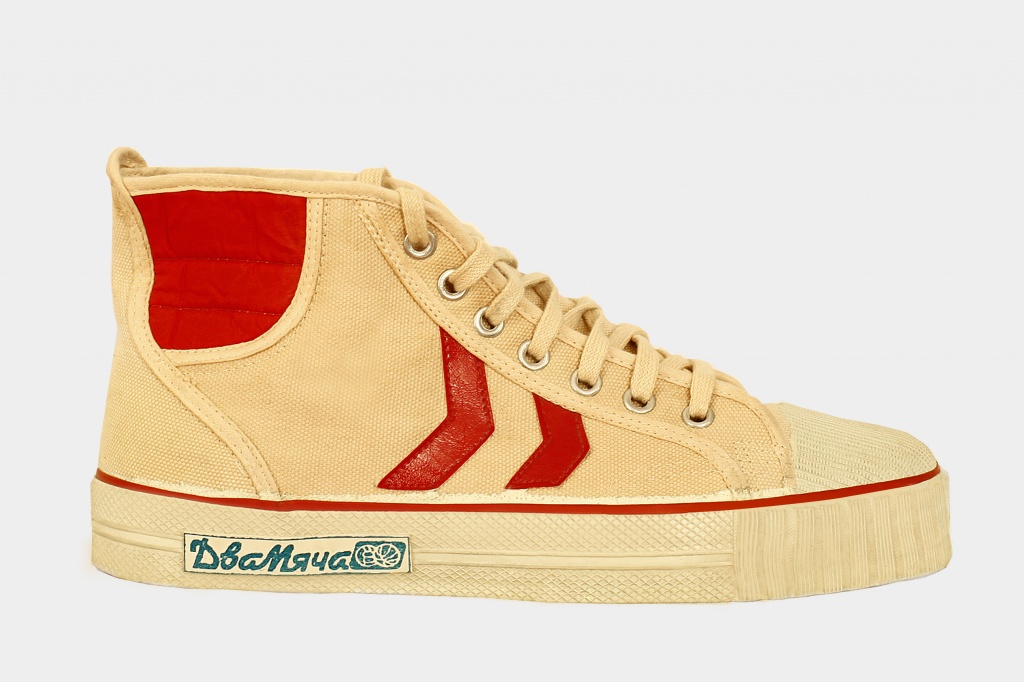 Despite the failed fundraising through crowdfunding, Eugene does not abandon the idea of reviving Soviet sneakers and creating the national brand Two Balls. At the time of communication with Shoes Report magazine (end of November 2013 of the year), the entrepreneur continued to meet with investors and seek funding opportunities. The minimum starting amount that is necessary for the implementation of the project, Eugene considers 22 million rubles. This investment will not only attract an audience, but also fully develop and build a business. The amount should cover the costs of development, production, testing, logistics, warehousing, marketing, marketing, offices in China and Moscow, a franchise package, a team and other expenses. By the volume of responses to the crowdfunding campaign, Eugene realized that Soviet sneakers are interesting to the audience, and estimates the minimum initial production volume as 13 thousand pairs. As for sales channels, Evgeni Raikov believes that there are about 90 stores in Russia that can potentially - and some already want to - sell its products. The entrepreneur's plans also include cooperation with retail chains of sports goods and access to international markets. In the future, Eugene plans to produce not only 5 classic models of “Two Balls” sneakers, but also to develop and refine shoe “eternal classics” from the USSR, which could repeat the success of Converse, which evolved over time to actual youth shoes. Eugene is sure that Soviet sneakers have no less development potential than the famous American brand.
Despite the failed fundraising through crowdfunding, Eugene does not abandon the idea of reviving Soviet sneakers and creating the national brand Two Balls. At the time of communication with Shoes Report magazine (end of November 2013 of the year), the entrepreneur continued to meet with investors and seek funding opportunities. The minimum starting amount that is necessary for the implementation of the project, Eugene considers 22 million rubles. This investment will not only attract an audience, but also fully develop and build a business. The amount should cover the costs of development, production, testing, logistics, warehousing, marketing, marketing, offices in China and Moscow, a franchise package, a team and other expenses. By the volume of responses to the crowdfunding campaign, Eugene realized that Soviet sneakers are interesting to the audience, and estimates the minimum initial production volume as 13 thousand pairs. As for sales channels, Evgeni Raikov believes that there are about 90 stores in Russia that can potentially - and some already want to - sell its products. The entrepreneur's plans also include cooperation with retail chains of sports goods and access to international markets. In the future, Eugene plans to produce not only 5 classic models of “Two Balls” sneakers, but also to develop and refine shoe “eternal classics” from the USSR, which could repeat the success of Converse, which evolved over time to actual youth shoes. Eugene is sure that Soviet sneakers have no less development potential than the famous American brand.
| Please rate the article |
Materials on the topic
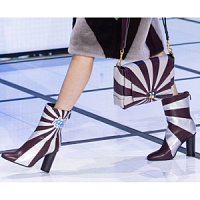
Pixel Collection Anya Hindmarch
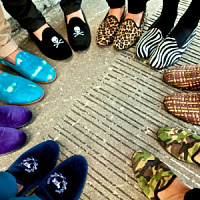
5 brands specializing in tailoring loafers
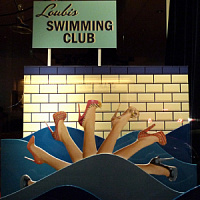
5 Showcases Christian Louboutin
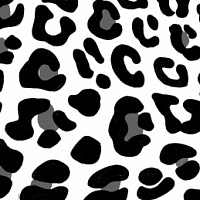
Spotted shoes. New reading
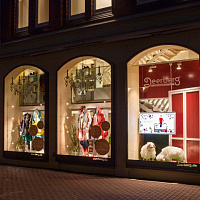
Let there be light! Lighting solutions for shop windows and a sales area
Popular
 Coach turned to Big Data analysis and won the interest of a young audience
American handbag brand Coach has planned the success of its Tabby model among a younger audience, Generation Z, by turning to big data analysis, abandoning traditional and analogue tools, such as human intuition or the ability of any executive to sense “which way the wind will blow,” writes B.O.F.
Coach turned to Big Data analysis and won the interest of a young audience
American handbag brand Coach has planned the success of its Tabby model among a younger audience, Generation Z, by turning to big data analysis, abandoning traditional and analogue tools, such as human intuition or the ability of any executive to sense “which way the wind will blow,” writes B.O.F.
 IDOL updates the concept
The IDOL brand, part of the Melon Fashion Group portfolio, opened the first flagship in an updated concept in the Aviapark shopping center in Moscow.
IDOL updates the concept
The IDOL brand, part of the Melon Fashion Group portfolio, opened the first flagship in an updated concept in the Aviapark shopping center in Moscow.
 Seven “sins” of the shoe business. How do owners harm the company with their own hands?
Why is Company X able to create a strong, profitable brand, but Company Y is struggling to make ends meet? Many people prefer to attribute success to luck, luck, or the support of strong patrons. And few people ask themselves the question: “What am I doing wrong?” Moreover, many entrepreneurs begin to harm their business from the first day of its opening. In this article, together with SR expert in the field of fashion business management and development, Maria Gerasimenko, we will look at the 7 main “sins” that business owners commit using specific examples.
Seven “sins” of the shoe business. How do owners harm the company with their own hands?
Why is Company X able to create a strong, profitable brand, but Company Y is struggling to make ends meet? Many people prefer to attribute success to luck, luck, or the support of strong patrons. And few people ask themselves the question: “What am I doing wrong?” Moreover, many entrepreneurs begin to harm their business from the first day of its opening. In this article, together with SR expert in the field of fashion business management and development, Maria Gerasimenko, we will look at the 7 main “sins” that business owners commit using specific examples.
 Louis Vuitton opens a new factory in Italy
Louis Vuitton has opened its second shoe factory in Italy. After opening the first one in Fiesso d'Artico in Veneto, the LVMH flagship brand has just opened a new production site dedicated to this category of footwear in the industrial zone of Civitano in the Marche region. There is also another brand production facility in Tuscany, where bags and leather accessories are produced, writes fr.fashionnetwork.com.
Louis Vuitton opens a new factory in Italy
Louis Vuitton has opened its second shoe factory in Italy. After opening the first one in Fiesso d'Artico in Veneto, the LVMH flagship brand has just opened a new production site dedicated to this category of footwear in the industrial zone of Civitano in the Marche region. There is also another brand production facility in Tuscany, where bags and leather accessories are produced, writes fr.fashionnetwork.com.
 The Euro Shoes@CAF exhibition will be held in Almaty
From March 11 to 13, the Euro Shoes@CAF (Central Asia Fashion) exhibition will be held in Almaty at the Atakent exhibition complex. The exhibition, which is the largest international event in the fashion industry in Central Asia, will present collections of clothing, shoes and accessories.
The Euro Shoes@CAF exhibition will be held in Almaty
From March 11 to 13, the Euro Shoes@CAF (Central Asia Fashion) exhibition will be held in Almaty at the Atakent exhibition complex. The exhibition, which is the largest international event in the fashion industry in Central Asia, will present collections of clothing, shoes and accessories.
 Euro Shoes will start operating on February 19 in Moscow!
The winter session of the international exhibition of footwear and accessories Euro Shoes premiere collection will be held in Moscow at the Expocenter from February 19 to 22. The organizers promise the presence of all the main participants at the exhibition, as well as new names from Europe, Asia and Russia.
Euro Shoes will start operating on February 19 in Moscow!
The winter session of the international exhibition of footwear and accessories Euro Shoes premiere collection will be held in Moscow at the Expocenter from February 19 to 22. The organizers promise the presence of all the main participants at the exhibition, as well as new names from Europe, Asia and Russia.
 American buyers couldn't buy Birkin bags and sued Hermès
French fashion house Hermès is facing a lawsuit in California from two customers who were unable to purchase exclusive Birkin bags. The fashion house is accused of unfair commercial practices.
American buyers couldn't buy Birkin bags and sued Hermès
French fashion house Hermès is facing a lawsuit in California from two customers who were unable to purchase exclusive Birkin bags. The fashion house is accused of unfair commercial practices.
 Why Rendez-Vous and Yandex Lavka released a “bread bag”
Shoe retailer Rendez-Vous announced the launch of a spring collaboration with Yandex Lavka and released a roll that resembles the shape of a woman’s handbag. This “Bread Bag” is presented in the Yandex.Lavka application at a price of 249 rubles. On the product packaging there is a promotional code for 1000 rubles, which can be spent in the Rendez-Vous network.
Why Rendez-Vous and Yandex Lavka released a “bread bag”
Shoe retailer Rendez-Vous announced the launch of a spring collaboration with Yandex Lavka and released a roll that resembles the shape of a woman’s handbag. This “Bread Bag” is presented in the Yandex.Lavka application at a price of 249 rubles. On the product packaging there is a promotional code for 1000 rubles, which can be spent in the Rendez-Vous network.
 Camper has released innovative sneakers - designers
Spanish brand Camper's new Roku sneaker features six interchangeable components to create up to 64 different looks and color combinations. Roku means "six" in Japanese.
Camper has released innovative sneakers - designers
Spanish brand Camper's new Roku sneaker features six interchangeable components to create up to 64 different looks and color combinations. Roku means "six" in Japanese.
 Christian Louboutin presented a collection in a cowboy style
At the Loubi Show in Paris, the French luxury brand Christian Louboutin presented its fall 2024 collection, following the trend - in the style of the Wild West. It included cowboy boots and rhinestone loafers.
Christian Louboutin presented a collection in a cowboy style
At the Loubi Show in Paris, the French luxury brand Christian Louboutin presented its fall 2024 collection, following the trend - in the style of the Wild West. It included cowboy boots and rhinestone loafers.
 Fashion Week takes place in Moscow
Fashion Week takes place in the Russian capital. Events include fashion shows, markets where you can purchase clothes, bags and accessories, and a B2B Showroom for fashion industry professionals.
Fashion Week takes place in Moscow
Fashion Week takes place in the Russian capital. Events include fashion shows, markets where you can purchase clothes, bags and accessories, and a B2B Showroom for fashion industry professionals.
 Turkish brand Vaneda on Euro Shoes
Street style, sport, outdoor, military – the main style directions of footwear of the company from Turkey
Turkish brand Vaneda on Euro Shoes
Street style, sport, outdoor, military – the main style directions of footwear of the company from Turkey
 Kari accuses Zenden of unfair competition and is suing the FAS
The largest Russian shoe chain, Kari, appealed to the Moscow Arbitration Court to declare the actions of the Federal Antimonopoly Service (FAS) illegal, writes RBC.
Kari accuses Zenden of unfair competition and is suing the FAS
The largest Russian shoe chain, Kari, appealed to the Moscow Arbitration Court to declare the actions of the Federal Antimonopoly Service (FAS) illegal, writes RBC.
 Fashion trends Fall-Winter 2023/24 for commercial footwear purchases
Permanent contributor to Shoes Report. Elena Vinogradova, an expert in sales and purchases in the fashion business, prepared an overview of the trends for the autumn-winter 2023/24 season especially for us.
Fashion trends Fall-Winter 2023/24 for commercial footwear purchases
Permanent contributor to Shoes Report. Elena Vinogradova, an expert in sales and purchases in the fashion business, prepared an overview of the trends for the autumn-winter 2023/24 season especially for us.
 MSCHF and Crocs launch "Big Yellow Boots"
Creator of the Big Red Boots, Brooklyn brand MSCHF has teamed up with American plastic clog and sandal brand Crocs for another oversized shoe. The new Big Yellow Boots will go on sale on August 9th.
MSCHF and Crocs launch "Big Yellow Boots"
Creator of the Big Red Boots, Brooklyn brand MSCHF has teamed up with American plastic clog and sandal brand Crocs for another oversized shoe. The new Big Yellow Boots will go on sale on August 9th.
 Five rules of professional lighting for a shoe store - something that is relevant in any season
When developing a lighting concept for shoe retailers, it is important to take into account not only the history of the brand, the architectural content of the premises, the target audience of the stores, but also the seasonality of the goods. With the onset of the cold season, client preferences change: bright weightless shoes are replaced by more massive models in discreet dark colors. Despite significant differences in summer and winter collections, the overall philosophy of the brand, its recognition should remain unchanged at any time of the year. Tatyana Ryzhova, an SR lighting expert in fashion retail, has identified five basic rules for a competent lighting concept for a shoe store for readers of the magazine, which will help to present winter assortment to customers in a winning way.
Five rules of professional lighting for a shoe store - something that is relevant in any season
When developing a lighting concept for shoe retailers, it is important to take into account not only the history of the brand, the architectural content of the premises, the target audience of the stores, but also the seasonality of the goods. With the onset of the cold season, client preferences change: bright weightless shoes are replaced by more massive models in discreet dark colors. Despite significant differences in summer and winter collections, the overall philosophy of the brand, its recognition should remain unchanged at any time of the year. Tatyana Ryzhova, an SR lighting expert in fashion retail, has identified five basic rules for a competent lighting concept for a shoe store for readers of the magazine, which will help to present winter assortment to customers in a winning way.
 I doubt and object: how to find an approach to difficult clients?
How good and serene would be the work of a salesperson if the customers were calm, cheerful, always knew exactly what they wanted, and bought, bought, bought! It is a pity that this is possible only in dreams. Therefore, we will not dream, but we will act. Together with Maria Gerasimenko, a permanent author of SR, we understand the doubts and objections of buyers and build a strategy for working with them. Our expert pays special attention to the two main objections of buyers, on which 82% of sales are lost.
I doubt and object: how to find an approach to difficult clients?
How good and serene would be the work of a salesperson if the customers were calm, cheerful, always knew exactly what they wanted, and bought, bought, bought! It is a pity that this is possible only in dreams. Therefore, we will not dream, but we will act. Together with Maria Gerasimenko, a permanent author of SR, we understand the doubts and objections of buyers and build a strategy for working with them. Our expert pays special attention to the two main objections of buyers, on which 82% of sales are lost.
 EURO SHOES presents an updated section of the GLOBAL SHOES exhibition with collections of shoe and bag brands from Asian countries
EURO SHOES premiere collection is expanding. Along with the traditional pool of leading European footwear brands from Germany, Spain, Italy and Turkey, several dozen footwear and bag brands from the Middle Kingdom will be presented in the GLOBAL SHOES section at the Moscow Expocentre from August 29 to September 1.
EURO SHOES presents an updated section of the GLOBAL SHOES exhibition with collections of shoe and bag brands from Asian countries
EURO SHOES premiere collection is expanding. Along with the traditional pool of leading European footwear brands from Germany, Spain, Italy and Turkey, several dozen footwear and bag brands from the Middle Kingdom will be presented in the GLOBAL SHOES section at the Moscow Expocentre from August 29 to September 1.
 World Footwear Yearbook: Global footwear production reaches 23,9 billion pairs and is back to pre-pandemic levels
The Portuguese association of shoe manufacturers APICCAPS published the 13th edition of the international statistical bulletin World Footwear Yearbook for 2023, according to which in 2022 the production and export of shoes worldwide increased by 7,6% and 9%, respectively, and the world production of shoes reached 23,9 billion couples and returned to pre-pandemic levels.
World Footwear Yearbook: Global footwear production reaches 23,9 billion pairs and is back to pre-pandemic levels
The Portuguese association of shoe manufacturers APICCAPS published the 13th edition of the international statistical bulletin World Footwear Yearbook for 2023, according to which in 2022 the production and export of shoes worldwide increased by 7,6% and 9%, respectively, and the world production of shoes reached 23,9 billion couples and returned to pre-pandemic levels.
 Rostov footwear brand Novak presented a collection of sneakers and sneakers
In the spring-summer 2023 season, the Rostov-on-Don shoe brand Novak presented a cute collection of sneakers and sneakers for every day. The upper of the shoe is made of genuine leather, suede, nubuck, the sole is made of light EVA.
Rostov footwear brand Novak presented a collection of sneakers and sneakers
In the spring-summer 2023 season, the Rostov-on-Don shoe brand Novak presented a cute collection of sneakers and sneakers for every day. The upper of the shoe is made of genuine leather, suede, nubuck, the sole is made of light EVA.
 Jacquemus x Nike collaboration released
The second collaboration between Jacquemus and Nike, which has been talked about so much, is finally out. The appearance of the couple for many was a surprise. The model of Nike Air Force 1 sneakers, which was taken as the basis of the new collection, has undergone significant changes.
Jacquemus x Nike collaboration released
The second collaboration between Jacquemus and Nike, which has been talked about so much, is finally out. The appearance of the couple for many was a surprise. The model of Nike Air Force 1 sneakers, which was taken as the basis of the new collection, has undergone significant changes.
 Crocs releases a collaboration with Barbie
If Barbie ditched heels and wore crocs, they would be pink. It was this collection in pink that was released by the American brand of plastic clogs Crocs, for the release of the film "Barbie" in the United States.
Crocs releases a collaboration with Barbie
If Barbie ditched heels and wore crocs, they would be pink. It was this collection in pink that was released by the American brand of plastic clogs Crocs, for the release of the film "Barbie" in the United States.
 Japanese BAPE takes to the catwalk MSCHF Big Red Boots
The story of Brooklyn brand MSCHF's oversized rubber boots continues. The last time they made noise in the auditorium was at the Rick Owens menswear show. Now they have already appeared on the podium.
Japanese BAPE takes to the catwalk MSCHF Big Red Boots
The story of Brooklyn brand MSCHF's oversized rubber boots continues. The last time they made noise in the auditorium was at the Rick Owens menswear show. Now they have already appeared on the podium.
 Shoe educational program: what shoe soles are made of
“What is the difference between TEP and EVA? What does tunit promise me? Is PVC glue? What is the sole of these shoes made of? ”- the modern buyer wants to know everything. In order not to smash his face in front of him and be able to explain whether such a sole suits him in soles, carefully read this article. In it, process engineer Igor Okorokov tells what materials the soles of shoes are made of and what makes each of them so good.
Shoe educational program: what shoe soles are made of
“What is the difference between TEP and EVA? What does tunit promise me? Is PVC glue? What is the sole of these shoes made of? ”- the modern buyer wants to know everything. In order not to smash his face in front of him and be able to explain whether such a sole suits him in soles, carefully read this article. In it, process engineer Igor Okorokov tells what materials the soles of shoes are made of and what makes each of them so good.
 How to set prices that will earn
Some businessmen still confuse the concept of margin with the concept of trade margins and set prices for their goods, guided solely by the example of competitors. No wonder they go broke! Analyst at the Academy of Retail Technologies Maxim Gorshkov gives several tips and formulas with which you can set not only ruinous, but also profitable prices.
How to set prices that will earn
Some businessmen still confuse the concept of margin with the concept of trade margins and set prices for their goods, guided solely by the example of competitors. No wonder they go broke! Analyst at the Academy of Retail Technologies Maxim Gorshkov gives several tips and formulas with which you can set not only ruinous, but also profitable prices.
 Sales of shoes and accessories: effective techniques for business rhetoric
Which speech modules are effective in communicating with potential and current customers of shoe stores, and which are not, Anna Bocharova, a business consultant, knows.
Sales of shoes and accessories: effective techniques for business rhetoric
Which speech modules are effective in communicating with potential and current customers of shoe stores, and which are not, Anna Bocharova, a business consultant, knows.
 We form the salary of sellers: expert advice
“How do you charge your consultants for personal or general sales?” Is one of the most popular questions causing a lot of controversy and gossip on the online forums of retail business owners. Indeed, how to properly form the earnings of sellers? But what about bonuses, where to get a sales plan from, do employees allow them to buy goods at discounted stores? In search of truth, the Shoes Report turned to a dozen shoe retailers, but no company wanted to disclose its motivation system - the process of its development was too complicated and individual. Then we asked four business consultants, and finally became convinced that the topic of seller motivation is very complex, because even our experts could not come to a common opinion.
We form the salary of sellers: expert advice
“How do you charge your consultants for personal or general sales?” Is one of the most popular questions causing a lot of controversy and gossip on the online forums of retail business owners. Indeed, how to properly form the earnings of sellers? But what about bonuses, where to get a sales plan from, do employees allow them to buy goods at discounted stores? In search of truth, the Shoes Report turned to a dozen shoe retailers, but no company wanted to disclose its motivation system - the process of its development was too complicated and individual. Then we asked four business consultants, and finally became convinced that the topic of seller motivation is very complex, because even our experts could not come to a common opinion.
 Technology Selling Issues
There is nothing worse than meeting the buyer with the words “Hello, can I help you with something?”, Because the seller works in the store just to help. Criticizing this well-established pattern of communication with the buyer, Andrei Chirkarev, business coach for effective sales and the founder of the New Economy project, shares the technology of truly selling issues with readers of Shoes Report.
Technology Selling Issues
There is nothing worse than meeting the buyer with the words “Hello, can I help you with something?”, Because the seller works in the store just to help. Criticizing this well-established pattern of communication with the buyer, Andrei Chirkarev, business coach for effective sales and the founder of the New Economy project, shares the technology of truly selling issues with readers of Shoes Report.
 The whole truth about Bayer. Who is he and how to become one?
Bayer is no longer a new, but still a popular and sought-after profession. It’s fashionable to be a buyer. Buyers are at the origins of the emergence and development of trends. If the designer offers his vision of fashion in the season, then the buyer selects the most interesting commercial ideas. It is on buyers that the policy of sales of stores and what, in the end, the buyer will wear depends on. This profession is surrounded by a magical fleur, often associated with a lack of understanding of what exactly is the work of a buyer.
The whole truth about Bayer. Who is he and how to become one?
Bayer is no longer a new, but still a popular and sought-after profession. It’s fashionable to be a buyer. Buyers are at the origins of the emergence and development of trends. If the designer offers his vision of fashion in the season, then the buyer selects the most interesting commercial ideas. It is on buyers that the policy of sales of stores and what, in the end, the buyer will wear depends on. This profession is surrounded by a magical fleur, often associated with a lack of understanding of what exactly is the work of a buyer.
 Fur, and not only: types of lining
In the production of winter footwear, various materials are used that are designed to retain heat and meet the requirements of consumers: natural sheepleather, artificial fur, artificial fur from natural wool and others. All types of lining fur have their own advantages and disadvantages. Let's consider the properties of each of them.
Fur, and not only: types of lining
In the production of winter footwear, various materials are used that are designed to retain heat and meet the requirements of consumers: natural sheepleather, artificial fur, artificial fur from natural wool and others. All types of lining fur have their own advantages and disadvantages. Let's consider the properties of each of them.
 Retail Arithmetic
Before you begin to solve specific problems, you need to find out how accurately all the leaders of your company understand the basic terminology of retail.
Retail Arithmetic
Before you begin to solve specific problems, you need to find out how accurately all the leaders of your company understand the basic terminology of retail.
 How to fire a worker without tears, scandal and trial
Sooner or later, any manager is faced with the need to part with an employee. Properly and on time the dismissal procedure will save the company money, and the boss himself - nerves and time. But why sometimes, knowing that a break in relations is inevitable, we put off the decision for months?
How to fire a worker without tears, scandal and trial
Sooner or later, any manager is faced with the need to part with an employee. Properly and on time the dismissal procedure will save the company money, and the boss himself - nerves and time. But why sometimes, knowing that a break in relations is inevitable, we put off the decision for months?






